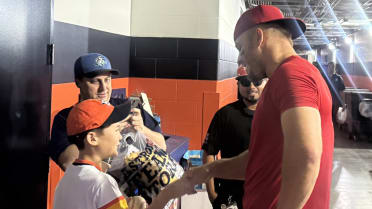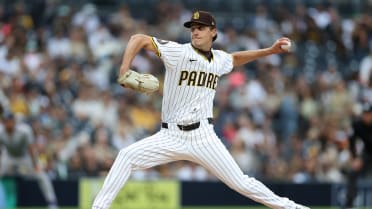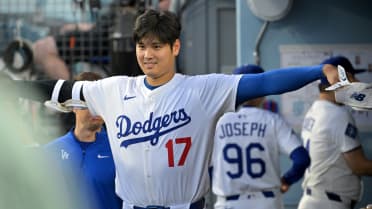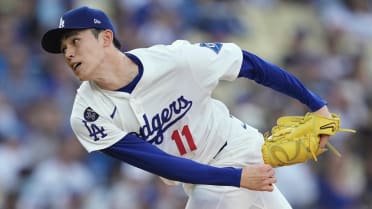ATLANTA -- Braves manager Brian Snitker has not revealed who will be his primary third baseman, but Austin Riley is happy to know he may soon be getting acquainted with a role he could possess for many years to come.
“I’ve grown up playing, and I want to play for a long time in the big leagues at third base,” Riley said. “Getting the opportunity to work there and get a lot of reps, it’s awesome. I love it.”
Atlanta would seemingly be at its best with Riley starting at third and Johan Camargo adding versatility to the bench. But even with Camargo bothered by a sore right hamstring this week, Snitker has not stated whether one of these candidates will play the position more frequently than the other.
“I think we’ll probably use them both,” Snitker said.
This isn’t necessarily like football, where it has often been said if you have two quarterbacks, you have none. Camargo proved to be quite capable of being the everyday third baseman for the 2018 National League East champion Braves. He would also be the better defensive option at the hot corner.
But Camargo can’t be the significant difference-maker Riley could be if he were to recapture where he was when he arrived at the big league level last year.
Riley’s tremendous potential was on display when he hit 14 homers (one every 11.5 at-bats) and produced a .930 OPS through his first 42 career games. Still, there were signs of potential trouble, as he had a 31.8 percent strikeout rate and walked eight times during this stretch of 174 plate appearances.
After surging through the early weeks of his career, Riley constructed a meager .495 OPS over 38 games during the rest of the season. He struck out 42.3 percent of the time and drew just six unintentional walks over 123 plate appearances.
Here’s a Statcast breakdown that indicates of how he fared against four-seamers and sliders during these two spans:
First 42 games
Vs. 4-seamers: 28.3 percent of pitches seen, .288 AVG (15-for-52), .654 SLG, 32.7 Whiff rate (35 of 107)
Vs. Sliders: 24.3 percent, .188 AVG (6-for-32), .406 SLG, 48.0 Whiff rate (48 of 100)
Other 38 games
Vs. 4-seamers: 31.8 percent of pitches seen, .108 AVG (4-for-37), .216 SLG, 37.1 Whiff rate (33 of 89)
Vs. Sliders: 23.7 percent, .083 AVG (2-for-24), .208 SLG, 53.3 Whiff rate (32 of 60)
“People say I can’t hit the slider,” Riley said in February. “I can hit them when they’re in the zone; I proved that. I hit a couple of those balls out. It’s recognizing which are strikes and balls, and being able to lay off those outside the zone and then to be able to hit the fastball whenever I get it.
“I felt like later in the season I was more focused on trying not to swing at that slider, so I wasn’t catching up to the fastball. I think the biggest thing is staying on that fastball and being able to recognize that slider. I think this swing I’ve made is going to allow me to do that.”
Riley showed improved plate discipline during Spring Training, when he produced a 1.080 OPS and struck out in just five of 32 plate appearances. The 23-year-old slugger hasn’t had as much success while facing Braves pitchers in intrasquad and scrimmage games over the past couple weeks.
But he does seem to have a better approach than he did last year, when he became so susceptible to offspeed and breaking pitches.
“The mechanics of my swing are a lot cleaner and a lot more consistent,” Riley said. “Not having to worry about that, I can focus on what the pitchers are trying to do to me.”
Supervising Club Reporter Mark Bowman has covered the Braves for MLB.com since 2001.




